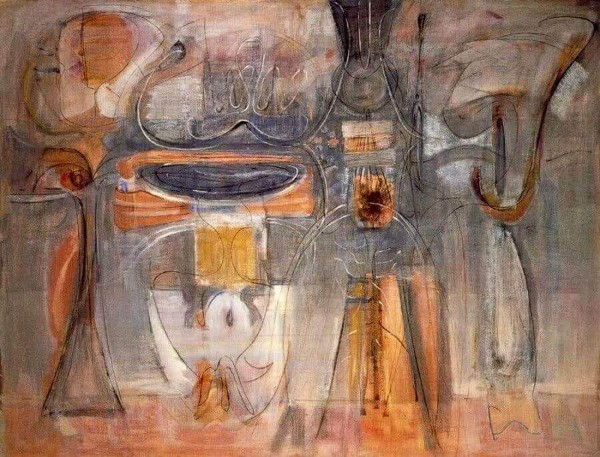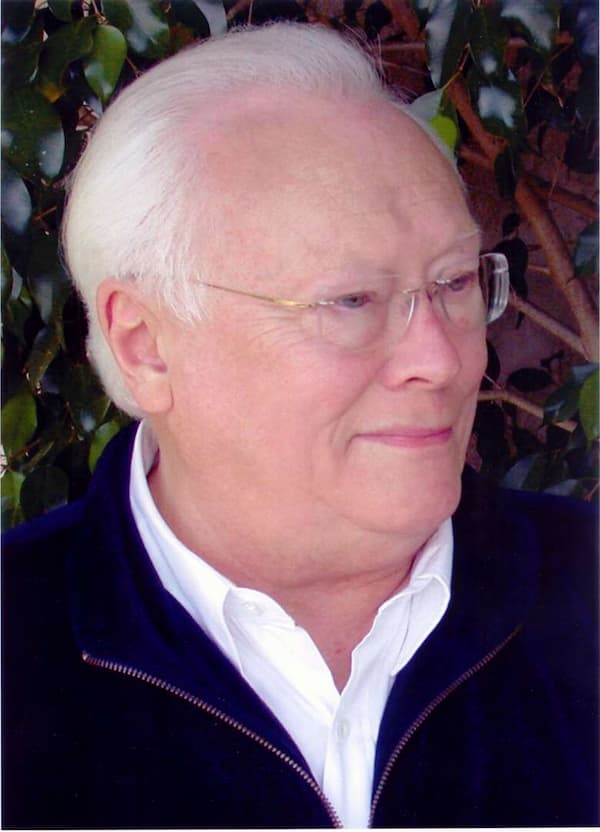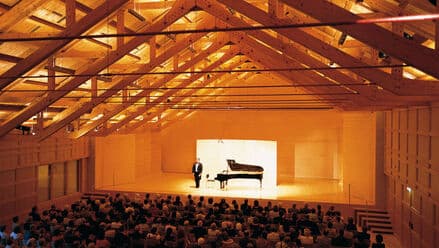Stuart Greenbaum’s Piano Music Inspired by M.C. Escher’s Art
Maurits Cornelis Escher (1898–1972), better known by his initials as M.C. Escher, was a Dutch graphic artist who used mathematics and logic to create unforgettable images that puzzle the viewer.
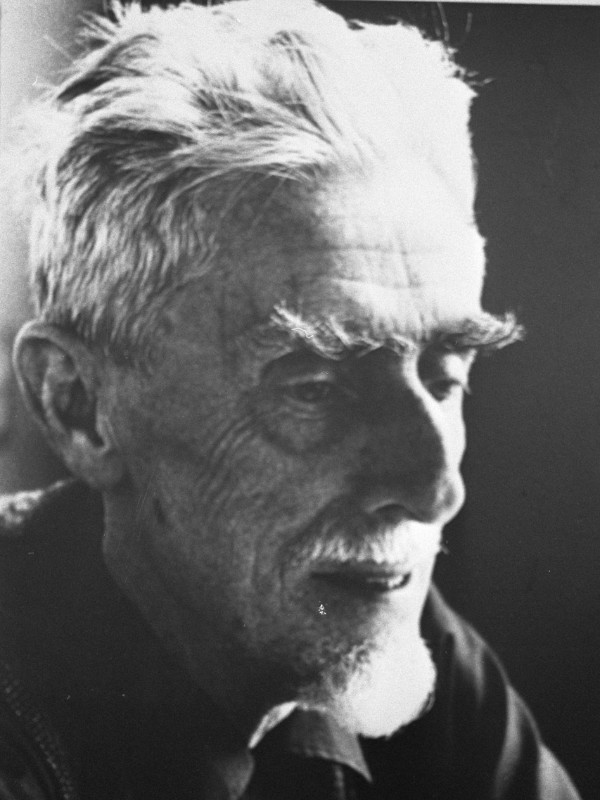
M.C. Escher, ca 1971 (photo by Hans Peters for Anefo) (Nationaal Archief NL)
His woodcuts, lithographs, and mezzotints show evolving images. In his 1938 woodcut Sky and Water I, the ideal fish at the bottom and the ideal goose at the top simplify and merge in the middle, using the void white spaces and the void black spaces.
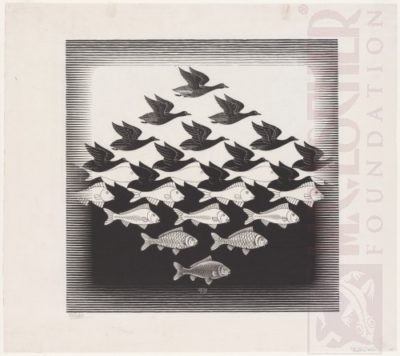
M.C. Escher: Sky and Water I, June 1938
Other examples of these ‘transformation prints’ merge birds and chessboard-like fields or lizards or buildings into men. It is his ‘impossible constructions’ that capture most people’s imagination. Staircases go in circles, with figures walking on the tops and undersides of the stairs with seeming carelessness at their relation to gravity.
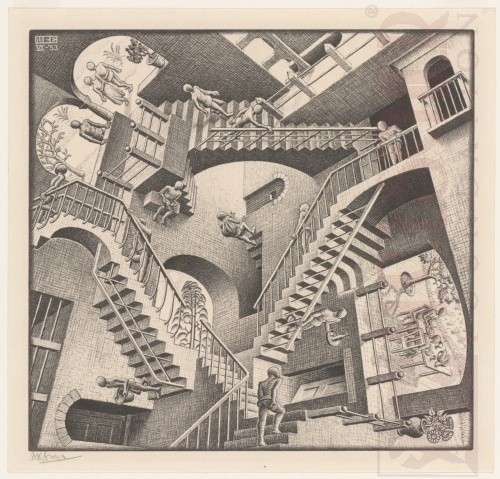
M.C. Escher: Relativity, July 1953
Modern app games such as Monument Valley also play with these ideas and images.
In a work such as Ascending and Descending, identically dressed figures walk up the outside of a staircase while at the same time, figures are walking down the inside of the staircase. Two other figures are in the image: one in a lower courtyard on the left and the other sitting in the middle of the entrance stairs on the lower right. The clothes of the stair walkers make it clear that they are stepping around the circle.
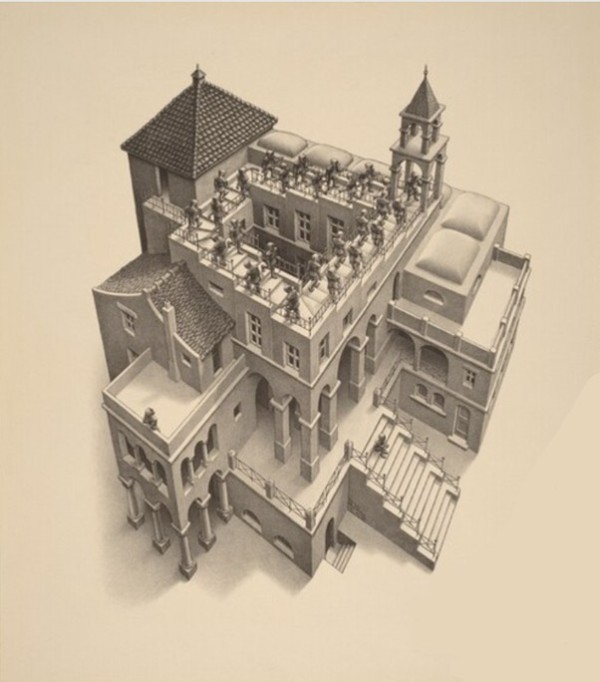
M.C. Escher: Ascending and Descending, 1960
Despite the regard that his work is held in now, for much of his career, Escher’s work was liked by neither mathematicians (who didn’t understand the art side) nor artists (who didn’t understand the maths side). It was only after Martin Gardner started talking about his work in the magazine Scientific American in 1966 that he came to the world’s notice, and the posters of his work appeared in every college dorm room.
Australian composer Stuart Greenbaum (b. 1966) was inspired by Escher’s Ascending and Descending to create his piano work New Roads, Old Destinations.

Stuart Greenbaum (photo by Pia Johnson)
Using Escher’s visual metaphor of impossibly circling stairs, Greenbaum takes a page from Claudio Monteverdi and the chorus ‘Non morir, Seneca’ from L’incoronazione di Poppea (Act I/iii). In the chorus, sung by Seneca’s followers who are attempting to dissuade him from his suicide, Monteverdi gives the impression that the music is constantly going higher and higher, while, in fact, it’s just going in a circle.
Stuart Greenbaum: New Roads, Old Destinations (John Martin, piano)
Greenbaum notes the ambiguity in his piece. In New Roads, Old Destinations, each time the phrases descend further (new roads) and yet still arrive back at the same cadential motive (old destinations). In between the ‘new roads’ are refrains based on the same sequential motive, but these never expand beyond 4 bars and also wind up at ‘old destinations’. The ever-descending motif is sombre and dark, and ultimately, like Escher’s work, is both enigmatic and circular.
For more of the best in classical music, sign up for our E-Newsletter

